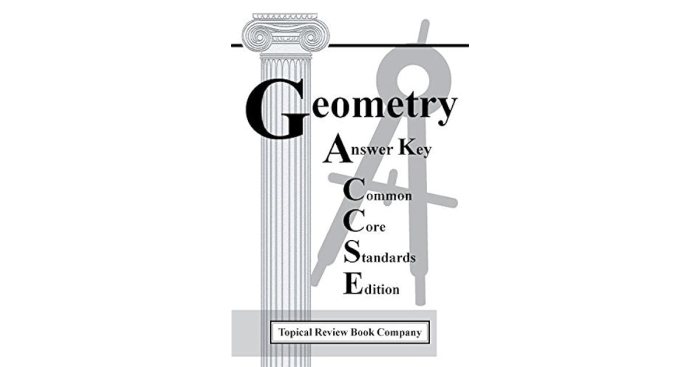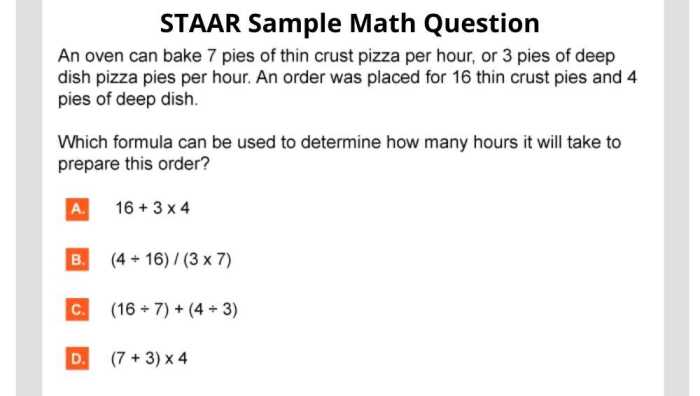Delving into the realm of Geometry Common Core Textbook Answers, this comprehensive guide unlocks the secrets of geometry, empowering students to conquer complex concepts and excel in their studies. Through an engaging exploration of textbook answer keys, problem-solving techniques, and real-world applications, this guide provides an invaluable resource for mastering geometry.
Geometry Common Core textbooks are designed to align with the rigorous standards set by the Common Core State Standards Initiative, ensuring that students are equipped with the knowledge and skills necessary for success in higher-level mathematics and beyond.
Common Core Geometry Textbook Overview

A Common Core geometry textbook is a resource designed to align with the Common Core State Standards (CCSS) for mathematics, specifically the geometry domain. It provides a comprehensive and structured approach to teaching geometry concepts and skills to high school students.
Textbook Structure
Common Core geometry textbooks typically follow a logical progression of topics, starting with basic concepts like points, lines, and angles, and gradually moving on to more complex topics like transformations, similarity, and trigonometry. The content is organized into chapters and sections, with each section covering a specific aspect of geometry.
Key Features and Components
- Clear and Concise Explanations:The textbook provides clear and concise explanations of geometry concepts, using precise language and accessible examples.
- Engaging Activities and Exercises:It includes a variety of engaging activities, exercises, and problem sets that allow students to practice and apply their understanding of geometry.
- Visual Aids and Diagrams:The textbook incorporates numerous visual aids, such as diagrams, graphs, and charts, to help students visualize and understand geometry concepts.
- Real-World Applications:It connects geometry to real-world applications, showing students how geometry is used in various fields such as architecture, engineering, and art.
- Technology Integration:Many textbooks offer online resources and interactive simulations that enhance student learning and engagement.
Textbook Answer Key
Answer keys are essential components of geometry textbooks, providing students with a valuable tool for self-assessment and reinforcement of concepts. They offer numerous benefits and pose certain challenges, requiring careful consideration for effective use.
Benefits of Answer Keys
- Self-Assessment:Answer keys allow students to check their understanding of the material and identify areas where they need additional support.
- Reinforcement of Concepts:By reviewing the answers, students reinforce their understanding of the concepts and procedures they have learned.
- Immediate Feedback:Answer keys provide immediate feedback, allowing students to correct their mistakes and make adjustments to their learning strategies.
Challenges of Answer Keys
- Over-Reliance:Students may become overly reliant on answer keys, neglecting to develop their own problem-solving skills.
- Temptation to Cheat:Answer keys can tempt students to cheat on assignments or assessments, undermining their learning.
- Limited Explanations:Answer keys often provide only the final answer, without explaining the reasoning or steps involved, which can hinder students’ understanding.
Tips for Using Answer Keys Effectively
- Encourage Self-Assessment:Encourage students to use answer keys for self-assessment, rather than relying on them as a substitute for independent problem-solving.
- Provide Partial Answers:Consider providing partial answers or hints, rather than full solutions, to promote students’ engagement with the material.
- Explain the Reasoning:Encourage students to write out the reasoning behind their answers, even if the answer key does not provide explanations.
Using Answer Keys for Practice and Assessment
Answer keys are invaluable tools for students to enhance their learning and prepare for assessments. They provide a structured and reliable way to practice concepts, identify areas for improvement, and gauge their understanding of the subject matter.
Strategies for Using Answer Keys for Practice and Self-Assessment
- Regular Practice:Regularly solving problems and checking answers against the key helps reinforce concepts and identify areas where further practice is needed.
- Self-Assessment:By comparing their answers to the provided solutions, students can assess their understanding and identify any misconceptions or gaps in their knowledge.
- Identifying Areas of Improvement:Answer keys highlight areas where students have made errors, allowing them to focus their efforts on improving their understanding of those specific concepts.
Role of Answer Keys in Preparing for Assessments
- Familiarization with Question Types:Answer keys provide examples of different question types, helping students become familiar with the format and expectations of the assessment.
- Practice under Timed Conditions:By practicing with answer keys, students can develop time management skills and learn to allocate their time effectively during the actual assessment.
li> Confidence Building:Correctly answering questions and comparing them to the answer key can boost students’ confidence and reduce anxiety during the assessment.
Types of Geometry Problems and Solutions: Geometry Common Core Textbook Answers
Geometry problems can be organized into different categories based on the concepts they cover. These categories include:
- Angles
- Triangles
- Circles
- Area and Volume
- Transformations
- Coordinate Geometry
Within each category, there are various types of problems that students may encounter in their textbooks. For example, in the angles category, students may be asked to find the measure of an angle, classify angles based on their measures, or solve problems involving angle relationships.Answer
keys can be a valuable resource for students when solving geometry problems. They provide step-by-step solutions that can help students understand the process of solving the problem and identify any errors they may have made.
Using Answer Keys for Practice and Assessment
Answer keys can be used for both practice and assessment purposes. When using answer keys for practice, students can check their work and identify areas where they need additional support. When using answer keys for assessment, teachers can evaluate students’ understanding of the material and identify areas where students may need additional instruction.When
using answer keys, it is important to remember that they should not be used as a substitute for understanding the concepts being taught. Students should first attempt to solve the problem on their own and only refer to the answer key if they are having difficulty.
By following these guidelines, students can use answer keys to effectively improve their understanding of geometry.
Visual Aids and Diagrams
Visual aids and diagrams are essential components of geometry textbooks. They help students visualize geometric concepts and relationships, making them easier to understand and remember.
There are many different types of visual aids used in geometry textbooks, including:
Drawings and Illustrations
- Drawings and illustrations provide a visual representation of geometric shapes and concepts. They can help students see the relationships between different parts of a shape, and to understand how shapes can be transformed.
- For example, a drawing of a circle can help students understand the relationship between the radius and the diameter. An illustration of a triangle can help students see how the angles of a triangle add up to 180 degrees.
Graphs and Charts
- Graphs and charts can be used to represent data in a visual way. They can help students see patterns and relationships in data, and to make predictions based on the data.
- For example, a graph of the relationship between the length of a side of a square and the area of the square can help students see how the area of a square increases as the length of a side increases.
Tables
- Tables can be used to organize data in a way that makes it easy to read and understand. They can help students compare different sets of data, and to see patterns and relationships in the data.
- For example, a table of the properties of different geometric shapes can help students compare the different properties of shapes, and to see how the properties of shapes are related to each other.
Using Visual Aids to Enhance Understanding
- Visual aids can be used to enhance understanding of geometry concepts in a number of ways.
- They can help students to visualize abstract concepts, to see relationships between different parts of a shape, and to understand how shapes can be transformed.
- They can also help students to see patterns and relationships in data, and to make predictions based on the data.
Real-World Applications of Geometry
Geometry is not just a theoretical subject confined to textbooks; it has numerous practical applications in various fields. From the towering skyscrapers to the intricate patterns in nature, geometry plays a vital role in shaping our world.
Architecture and Engineering
Geometry is the cornerstone of architecture and engineering. Architects use geometric principles to design buildings, bridges, and other structures that are both aesthetically pleasing and structurally sound. Engineers rely on geometry to calculate the forces acting on structures and ensure their stability.
For instance, the iconic Eiffel Tower in Paris showcases the application of geometric principles in creating a visually stunning and structurally stable landmark.
Art and Design, Geometry common core textbook answers
Geometry is also an integral part of art and design. Artists use geometric shapes and patterns to create visually appealing works, from paintings and sculptures to textiles and jewelry. Graphic designers leverage geometric principles to create logos, websites, and other visual elements that effectively communicate messages.
The famous painting “Composition VII” by Wassily Kandinsky is an excellent example of how geometric shapes can convey emotions and ideas through art.
Science and Technology
Geometry has significant applications in various scientific and technological fields. In physics, geometry helps us understand the motion of objects and the forces acting upon them. In computer science, geometry is used in computer graphics, image processing, and robotics. For instance, in robotics, geometric algorithms are employed to control the movement of robotic arms and navigate them through complex environments.
Essential FAQs
What is the purpose of an answer key in a geometry textbook?
Answer keys provide students with the correct solutions to problems, allowing them to check their work, identify areas for improvement, and reinforce their understanding of geometry concepts.
How can answer keys be used effectively for practice?
Students can use answer keys to practice solving problems independently, identify common mistakes, and develop strategies for tackling more complex problems.
What are some real-world applications of geometry?
Geometry is used in architecture, engineering, art, design, and many other fields. For example, architects use geometry to design buildings, engineers use it to design bridges, and artists use it to create sculptures and paintings.
